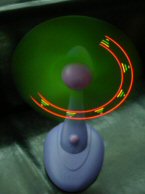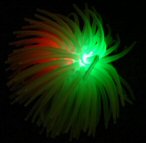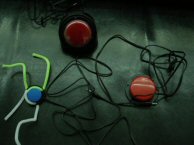EDSE 669
Position and Handling
George Mason University
Spring 200
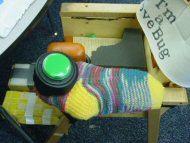
EDSE 669
|
 |
|---|
This course was my introduction into the world of Severe Disabilities. I had been working in the general education setting for 17 years and in a classroom for students with Learning Disabilities for 7 years. The year I began my new position as Assistive Technology Specialist, I began to work with several students with severe disabilities. This course helped me understand severe disabilities and how to deal with more students’ needs.
Pillar Buddy was created in response to a need and a course requirement. To encourage students to realize the practicality of creating and using low tech devices we were required to “Create a low-tech assistive device for a student with severe or multiple disabilities that is designed to increase, maintain, or improve their functioning in one of the following areas: Self-care, feeding, communication, positioning and mobility, access to school activities, access to home activities, or access to play and leisure activities.”
I had been working with a preschooler for several weeks when I noticed that it was difficult to place switches in a steady position that was within his reach. I used a multicolored home knitted sock decorated with large fabric eyes and furry hair to create a small pillow that fit on the arm of the student’s chair. The cushioning positioned his arm and hand, so that the student was better able to access the device.
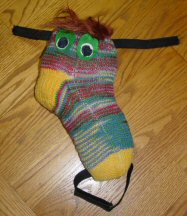
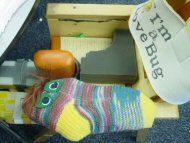
The PowerPoint presentation of this project is available on an accompanying CD.
The final project was dedicated to young students with multiple disabilities who have no formal way to communicate choices. I spoke with the teachers, therapists, assistants, a personal nurse, and reviewed the files to get ideas for each student’s strengths, weaknesses, likes, dislikes, and any intentional movements that had been noted.
To help a student learn to communicate, it is important to find something that will attract the student’s attention and elicit a response. I first tried a fan with light patterns. It was exciting to see the student’s eyes shine! Although he had a hard time with a switch device called a little Mac, he tried to push the button with his cheek. He would feel the breeze and look towards the fan. He was able to activate the fan. We tested them in different positions putting them close to different parts of the student’s body to find his best control. His cheek was a possibility but the head rest on his chair was a great place to attach a smaller switch.
The second student had a very different response.
The fan
caused obvious discomfort. Finding other stimuli was
vital.
This student had more interest when the object had
lights
and sounds. The objects were suspended in front of
him.
After several full physical prompts, the student swooped the bells and
the lighted squiggle ball towards his face.
The next step would be to take data to prove and/or disprove the intentionality of movements. I developed this sheet to work with the students, to investigate motivating stimulus as well as positive and negative responses. Other adults will be encouraged to keep data and results will be compared and discussed. This project opened exciting possibilities for these students!
To find a method of communication for a child who is held prisoner in his/her own body has to be an incredible accomplishment.
